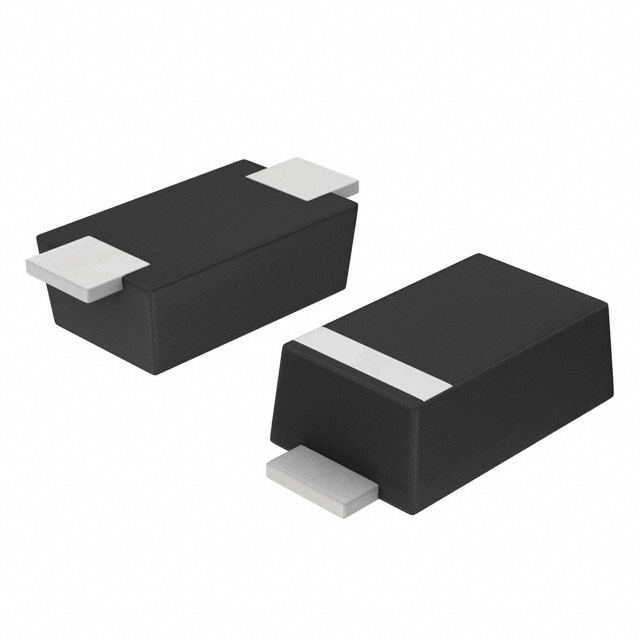Xem thông số kỹ thuật để biết chi tiết sản phẩm.

US2JFL-TP Product Overview
Introduction
The US2JFL-TP is a semiconductor product belonging to the category of ultra-fast rectifiers. This component is widely used in electronic circuits for its high-speed performance and efficient energy conversion capabilities. In this entry, we will provide a comprehensive overview of the US2JFL-TP, including its basic information, specifications, pin configuration, functional features, advantages and disadvantages, working principles, application field plans, and alternative models.
Basic Information Overview
- Category: Ultra-Fast Rectifiers
- Use: Energy conversion in electronic circuits
- Characteristics: High-speed performance, efficient energy conversion
- Package: TO-277A
- Essence: Semiconductor diode for rectification
- Packaging/Quantity: Available in reels or tubes
Specifications
- Voltage Rating: 600V
- Current Rating: 2A
- Forward Voltage Drop: 0.85V
- Reverse Recovery Time: 35ns
- Operating Temperature Range: -65°C to +175°C
Detailed Pin Configuration
The US2JFL-TP follows the standard pin configuration for TO-277A package: - Pin 1: Anode - Pin 2: Cathode
Functional Features
- Ultra-fast switching speed
- Low forward voltage drop
- High surge current capability
- Low reverse leakage current
Advantages and Disadvantages
Advantages
- Efficient energy conversion
- Suitable for high-frequency applications
- Compact package size
- Reliable performance under high surge currents
Disadvantages
- Sensitive to voltage spikes
- Limited reverse voltage rating compared to other rectifiers
Working Principles
The US2JFL-TP operates based on the principle of rectification, where it allows current flow in only one direction, effectively converting alternating current (AC) to direct current (DC). Its ultra-fast switching speed ensures minimal power loss during the conversion process.
Detailed Application Field Plans
The US2JFL-TP finds extensive use in the following application fields: - Switching power supplies - Flyback diodes in inductive load circuits - High-frequency rectification circuits - Motor drive circuits - Solar inverters
Detailed and Complete Alternative Models
For applications requiring similar characteristics and performance, the following alternative models can be considered: - US3JFL-TP: Higher voltage rating (1000V) - US1JFL-TP: Lower current rating (1A) - US4JFL-TP: Higher current rating (4A)
In conclusion, the US2JFL-TP is a crucial component in electronic circuits, offering ultra-fast rectification with efficient energy conversion. Its compact size and high-speed performance make it suitable for various high-frequency applications, despite its sensitivity to voltage spikes and limited reverse voltage rating. Understanding its specifications, pin configuration, functional features, and application field plans is essential for utilizing the US2JFL-TP effectively in electronic designs.
[Word Count: 410]
Liệt kê 10 câu hỏi và câu trả lời thường gặp liên quan đến ứng dụng US2JFL-TP trong giải pháp kỹ thuật
What is US2JFL-TP?
- US2JFL-TP is a type of diode rectifier commonly used in electronic circuits for voltage regulation and power conversion.
What are the typical applications of US2JFL-TP?
- US2JFL-TP diodes are commonly used in power supplies, battery chargers, inverters, and other electronic devices requiring rectification and voltage regulation.
What is the maximum forward current rating of US2JFL-TP?
- The maximum forward current rating of US2JFL-TP is typically around 2A, making it suitable for low to moderate power applications.
What is the reverse voltage rating of US2JFL-TP?
- The reverse voltage rating of US2JFL-TP is typically around 100V, providing protection against reverse voltage spikes in circuits.
Can US2JFL-TP be used in high-frequency applications?
- US2JFL-TP diodes are not specifically designed for high-frequency applications and may exhibit limitations at higher frequencies.
Are there any temperature considerations when using US2JFL-TP?
- It is important to consider the temperature range in which US2JFL-TP operates to ensure proper performance and reliability in the application.
What are the package options available for US2JFL-TP?
- US2JFL-TP diodes are commonly available in surface mount packages such as SOD-123FL, making them suitable for compact circuit designs.
Can US2JFL-TP be used in automotive applications?
- US2JFL-TP diodes can be used in certain automotive applications, but it is important to ensure that they meet the specific requirements and standards for automotive electronics.
What are the key differences between US2JFL-TP and other diode rectifiers?
- US2JFL-TP diodes may have different forward voltage drops, reverse recovery times, and thermal characteristics compared to other diode rectifiers, impacting their suitability for specific applications.
How can I optimize the performance of US2JFL-TP in my technical solution?
- Optimizing the layout, heat dissipation, and operating conditions can help maximize the performance and reliability of US2JFL-TP in a given technical solution.

